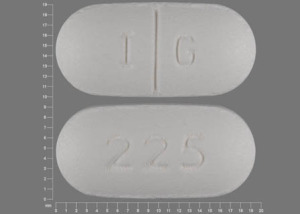Gemfibrozil Disease Interactions
There are 6 disease interactions with gemfibrozil.
- Biliary cirrhosis
- Cholelithiasis
- Rhabdomyolysis
- Liver disease
- Renal dysfunction
- Hematological changes
Fibric acid derivatives (applies to gemfibrozil) biliary cirrhosis
Major Potential Hazard, High plausibility.
The use of fibric acid derivatives is contraindicated in patients with primary biliary cirrhosis. These agents may further raise the already elevated cholesterol in these patients.
Fibric acid derivatives (applies to gemfibrozil) cholelithiasis
Major Potential Hazard, High plausibility. Applicable conditions: Gallbladder Disease
The use of fibric acid derivatives is contraindicated in patients with gallbladder disease. A significantly increased incidence of cholelithiasis has been observed in patients treated with the fibric acid derivative, clofibrate, presumably because of increased cholesterol excretion into the bile. Based on two separate studies (the WHO study and the Coronary Drug Project study), clofibrate use was associated with twice the risk of developing cholelithiasis and cholecystitis requiring surgery. Due to their structural and pharmacologic similarities, use of other fibric acid derivatives may be expected to carry the same risk.
Fibric acid derivatives (applies to gemfibrozil) rhabdomyolysis
Major Potential Hazard, Moderate plausibility. Applicable conditions: Myoneural Disorder, Myopathy
Severe myopathy, including rhabdomyolysis with acute renal failure secondary to myoglobinuria, has been reported rarely with the use of fibric acid derivatives. The myopathy may be dose-related and is characterized by muscle aches and/or weakness in conjunction with increases in creatine phosphokinase (CPK) values exceeding 10 times the upper limit of normal. Therapy with fibric acid derivatives should be administered cautiously in patients with preexisting myopathy or a myoneural disorder, since it may delay the recognition or confound the diagnosis of a drug-induced musculoskeletal effect. Patients should be advised to report promptly any unusual muscle pain, tenderness or weakness, particularly if accompanied by malaise or fever. Periodic CPK determinations may be considered in some patients, although the value of such monitoring is uncertain. Therapy should be withdrawn if markedly elevated CPK levels occur or if drug-related myopathy is diagnosed or suspected.
Gemfibrozil (applies to gemfibrozil) liver disease
Major Potential Hazard, High plausibility.
The use of gemfibrozil is considered by the manufacturer to be contraindicated in patients with hepatic impairment. Gemfibrozil is primarily metabolized by the liver. Decreased drug metabolism may lead to accumulation and increased risk of toxicity, including biochemical abnormalities of liver function and musculoskeletal adverse effects. Therapy with gemfibrozil should be administered cautiously in patients with active liver disease. Liver function tests, including serum transaminase levels, should be performed periodically. Therapy should be withdrawn if persistent abnormalities occur and are thought to be related to the drug.
Gemfibrozil (applies to gemfibrozil) renal dysfunction
Major Potential Hazard, High plausibility.
The use of gemfibrozil is considered by the manufacturer to be contraindicated in patients with severely impaired renal function. The rate of clearance of gemfibrozil may be decreased in such patients, with possible accumulation during chronic dosing. Increased adverse effects, including rhabdomyolysis (with or without secondary renal failure) and severe hyperkalemia, have been associated with the use of fibric acid derivatives in patients with renal insufficiency. Some patients, usually those with baseline plasma creatinine above 2.0 mg/dL, have also experienced a deterioration of renal function when treated with gemfibrozil. Therapy with gemfibrozil should be administered cautiously in patients with significant renal impairment. Reduced dosages and close clinical monitoring are recommended.
Fibric acid derivatives (applies to gemfibrozil) hematological changes
Moderate Potential Hazard, Moderate plausibility. Applicable conditions: Anemia
Mild to moderate hemoglobin, hematocrit and white blood cell decreases have been observed in patients following initiation of fibric acid derivatives therapy. However, these levels stabilize during long-term administration. Thrombocytopenia and agranulocytosis have been reported in individuals treated with these agents. Caution is recommended when treating patients predisposed to hematologic changes. Periodic monitoring of red and white blood cell counts is recommended during the first 12 months of therapy.
Switch to professional interaction data
Gemfibrozil drug interactions
There are 120 drug interactions with gemfibrozil.
More about gemfibrozil
- gemfibrozil consumer information
- Check interactions
- Compare alternatives
- Pricing & coupons
- Reviews (27)
- Drug images
- Side effects
- Dosage information
- During pregnancy
- Drug class: fibric acid derivatives
- Breastfeeding
- En español
Related treatment guides
Drug Interaction Classification
| Highly clinically significant. Avoid combinations; the risk of the interaction outweighs the benefit. | |
| Moderately clinically significant. Usually avoid combinations; use it only under special circumstances. | |
| Minimally clinically significant. Minimize risk; assess risk and consider an alternative drug, take steps to circumvent the interaction risk and/or institute a monitoring plan. | |
| No interaction information available. |
See also:
Further information
Always consult your healthcare provider to ensure the information displayed on this page applies to your personal circumstances.


